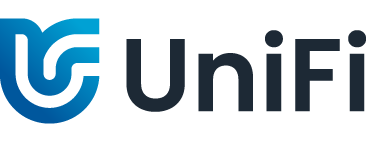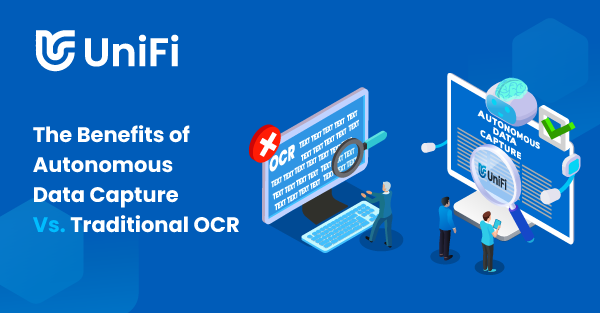The efficiency of data management systems can significantly impact organisational productivity and accuracy. One of the key technologies aiding in data management is Optical Character Recognition (OCR).
Traditional OCR has long been a staple for converting digital, printed and handwritten text into machine-readable data.
However, developments in machine learning and AI have led to the advent of advanced technologies, particularly Autonomous Data Capture.
UniFi Autonomous Data Capture, for example, provides superior capabilities beyond what traditional OCR can achieve.
In this article, we’ll explore the benefits of Autonomous Data Capture compared to traditional OCR.
Understanding Traditional OCR
Traditional OCR technology operates by comparing scanned images of text against a database of stored font and text image patterns.
Essentially, it uses pattern recognition to identify characters within a document. While this approach has facilitated the digitisation of text, it comes with notable limitations.
One significant drawback of traditional OCR is its dependency on templates and predefined font patterns.
This rigidity means that any deviation from the stored patterns, such as new fonts or handwriting styles, can result in inaccuracies.
Consequently, traditional OCR often struggles with documents that use a variety of fonts, sizes, and orientations.
Moreover, traditional OCR lacks contextual understanding. It processes text in a linear, character-by-character manner without comprehending the meaning or context of the content.
This limitation can lead to errors, especially in complex or unstructured documents where the context is crucial for accurate data extraction.
The Rise of Autonomous Data Capture
Autonomous Data Capture technologies, like UniFi Autonomous Data Capture, integrate Machine Learning (ML) and Artificial Intelligence (AI) to transcend the limitations of traditional OCR.
These systems offer several advantages that significantly enhance data processing capabilities and redefine what OCR can achieve.
Minimal to Zero Human Input
One of the most significant advantages of Autonomous Data Capture over traditional OCR is its ability to operate with minimal to no human input.
Unlike traditional OCR systems that require constant manual setup, template creation, data verification, monitoring, and frequent intervention, Autonomous Data Capture runs autonomously in the background.
By leveraging AI and machine learning, platforms like UniFi Autonomous Data Capture can intelligently identify and extract relevant data from documents without human intervention. The system continuously learns and adapts to new document types, structures, and content, ensuring flexibility and efficiency.
Once configured, it can continuously scan, process, and extract data from incoming documents without the need for human oversight. This autonomous operation allows businesses to maintain a constant flow of data processing without dedicating staff to manage the system full-time.
The ability to run autonomously enhances business productivity, drastically reduces time spent on manual data entry, significantly lowers costs associated with human oversight, and enables consistent, accurate data capture at scale.
This hands-off approach not only saves time and reduces the potential for human error but also allows employees to focus on higher-value tasks that require human insight and decision-making.
Enhanced Accuracy and Flexibility
One of the most notable benefits of Autonomous Data Capture is its enhanced accuracy.
By utilising ML algorithms, these systems can learn and adapt to a wide array of fonts, handwriting styles, and document layouts.
This adaptability eliminates the need for rigid templates, allowing for the accurate processing of diverse document types.
Unlike traditional OCR, which often requires manual setup and adjustment, Autonomous Data Capture systems understand the context of the text they process.
This contextual understanding enables them to extract relevant information from complex and unstructured documents with a higher degree of accuracy.
For example, UniFi Autonomous Data Capture can identify and extract specific data such as vendor names, prices, and payment terms from invoices, even if this information is not explicitly labelled.
Speed and Efficiency
The integration of automation in Autonomous Data Capture systems drastically improves processing speed.
Traditional OCR often requires significant manual intervention, from setting up templates to verifying extracted data.
In contrast, Autonomous Data Capture automates the entire process, from data extraction to validation, allowing for real-time processing of documents.
This automation significantly accelerates workflows, enabling businesses to process large volumes of documents quickly and reducing the time and effort required for manual data entry.
For instance, UniFi Autonomous Data Capture can handle thousands of documents in various formats and layouts swiftly and accurately, freeing up valuable time for more critical tasks.
Improved Data Integrity
Data integrity is crucial for making informed business decisions.
Autonomous Data Capture systems enhance data integrity by providing confidence scores for extracted data, allowing users to set thresholds and flag data that may need further verification.
By automating data extraction and reducing human intervention, Autonomous Data Capture minimises the risk of errors associated with manual data entry, leading to more consistent and accurate data.
Versatility and Integration
Autonomous Data Capture technologies are incredibly versatile and capable of processing a wide range of document formats, including printed text, handwritten notes, and scanned images.
This versatility makes them suitable for various applications, from digitising historical records to processing modern business documents.
Moreover, Autonomous Data Capture technologies, like UniFi, seamlessly integrate with existing business systems, such as enterprise resource planning (ERP) and accounting software.
This integration streamlines the flow of information across the organisation, enhancing overall productivity.
With UniFi, all features are included for one price, eliminating the need for multiple disparate systems and reducing costs.
Cost Savings
The automation capabilities of Autonomous Data Capture lead to significant cost savings.
By reducing the need for manual labour, businesses can lower operational costs associated with data entry and verification. This time saving can allow current staff to spend time on higher value tasks.
Additionally, platforms like UniFi consolidate multiple functionalities into a single system, reducing the need for third-party software and further cutting costs.
Real-World Applications and Benefits
The real-world applications of Autonomous Data Capture are vast and varied across industries.
For instance, in the financial sector, Autonomous Data Capture can streamline the processing of invoices and receipts.
Traditional OCR systems often require manual intervention to handle different formats and layouts. In contrast, Autonomous Data Capture can automatically understand and process various document types, extracting relevant data with high accuracy.
In the healthcare industry, Autonomous Data Capture can significantly improve the management of patient records, accurately processing diverse formats and handwritten notes. This ensures that healthcare providers have quick and reliable access to essential patient information, enhancing the quality of care.
In the legal field, Autonomous Data Capture can transform legal documents, contracts, and case files into searchable digital archives. This allows legal professionals to quickly locate and retrieve relevant information.
Enhancing Business Intelligence
Beyond immediate benefits, Autonomous Data Capture also enhances business intelligence capabilities.
By converting unstructured data into structured, machine-readable formats, these systems enable more effective data analysis.
Businesses can use this data to gain insights into operations, customer behaviour, and market trends.
For example, processing and analysing invoices and receipts can help businesses identify spending patterns and detect anomalies, leading to more informed financial decisions.
The Future of Data Capture
As machine learning and AI technologies continue to advance, the capabilities of Autonomous Data Capture systems will only improve.
Future developments may include even greater accuracy, faster processing speeds, and more sophisticated contextual understanding, further reducing the need for human intervention and allowing businesses to focus on strategic tasks.
The integration of Autonomous Data Capture with other emerging technologies, such as the Internet of Things (IoT), could open up new possibilities for secure and efficient data management.
Conclusion
The transition from traditional OCR to Autonomous Data Capture technologies marks a significant leap forward in document processing.
By leveraging machine learning and artificial intelligence, Autonomous Data Capture systems offer enhanced accuracy, speed, data integrity, versatility, and cost savings.
These benefits make Autonomous Data Capture an invaluable tool for modern businesses, enabling them to manage their data more efficiently and effectively.
In an era where data is a critical asset, adopting Autonomous Data Capture technologies like UniFi can transform how organisations handle and utilise information.
As technology continues to evolve, the future of data capture promises even greater innovations, further solidifying the role of Autonomous Data Capture in the digital transformation of businesses.
Want to see UniFi Autonomous Data Capture in action? Request a free demo today!


